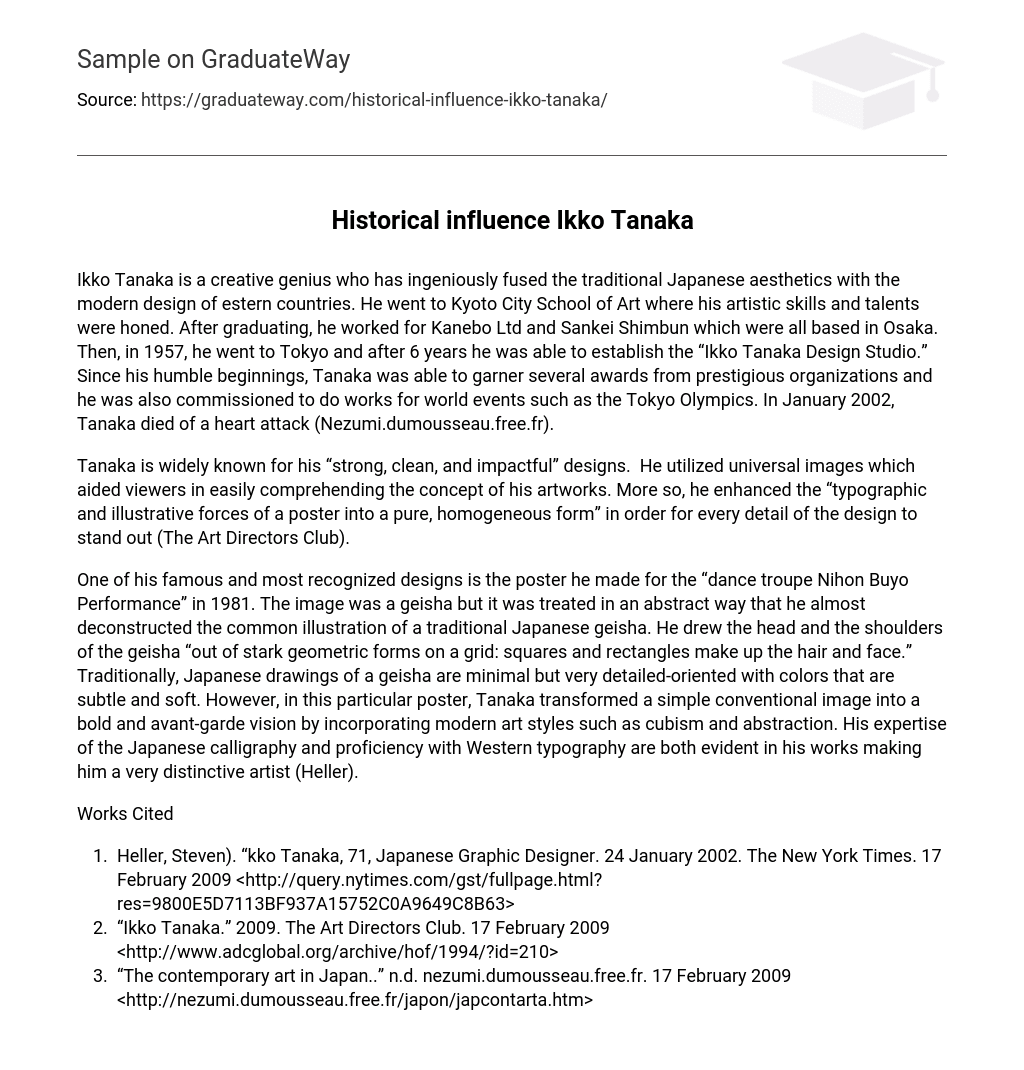Ikko Tanaka is a creative genius who has ingeniously fused the traditional Japanese aesthetics with the modern design of estern countries. He went to Kyoto City School of Art where his artistic skills and talents were honed. After graduating, he worked for Kanebo Ltd and Sankei Shimbun which were all based in Osaka. Then, in 1957, he went to Tokyo and after 6 years he was able to establish the “Ikko Tanaka Design Studio.” Since his humble beginnings, Tanaka was able to garner several awards from prestigious organizations and he was also commissioned to do works for world events such as the Tokyo Olympics. In January 2002, Tanaka died of a heart attack (Nezumi.dumousseau.free.fr).
Tanaka is widely known for his “strong, clean, and impactful” designs. He utilized universal images which aided viewers in easily comprehending the concept of his artworks. More so, he enhanced the “typographic and illustrative forces of a poster into a pure, homogeneous form” in order for every detail of the design to stand out (The Art Directors Club).
One of his famous and most recognized designs is the poster he made for the “dance troupe Nihon Buyo Performance” in 1981. The image was a geisha but it was treated in an abstract way that he almost deconstructed the common illustration of a traditional Japanese geisha. He drew the head and the shoulders of the geisha “out of stark geometric forms on a grid: squares and rectangles make up the hair and face.” Traditionally, Japanese drawings of a geisha are minimal but very detailed-oriented with colors that are subtle and soft. However, in this particular poster, Tanaka transformed a simple conventional image into a bold and avant-garde vision by incorporating modern art styles such as cubism and abstraction. His expertise of the Japanese calligraphy and proficiency with Western typography are both evident in his works making him a very distinctive artist (Heller).
Works Cited
- Heller, Steven). “kko Tanaka, 71, Japanese Graphic Designer. 24 January 2002. The New York Times. 17 February 2009 <http://query.nytimes.com/gst/fullpage.html?res=9800E5D7113BF937A15752C0A9649C8B63>
- “Ikko Tanaka.” 2009. The Art Directors Club. 17 February 2009 <http://www.adcglobal.org/archive/hof/1994/?id=210>
- “The contemporary art in Japan..” n.d. nezumi.dumousseau.free.fr. 17 February 2009 <http://nezumi.dumousseau.free.fr/japon/japcontarta.htm>





